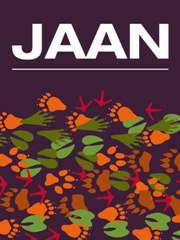Article contents
Influence of soybean bioactive peptides on performance, foot pad lesions and carcass characteristics in broilers
Published online by Cambridge University Press: 18 April 2018
Summary
The influence of different inclusion levels of a biologically active peptide derived from soybeans by enzymatic hydrolysis, on growth performance, foot pad lesions and carcass characteristics in broilers were examined in this study. Starter (1 to 21 d) and finisher (22 to 42 d) diets, based on maize and soybean meal, were subjected to seven inclusion levels of a commercial soybean bioactive peptide (SBP) product (Fortide, Chengdu Mytech Biotech Co. Ltd., Chengdu, Sichuan, China) at 0.0, 1.0, 2.0, 3.0, 4.0, 5.0 and 6.0 g/kg of diet. All diets were equivalent in respect of energy density, digestible amino acids and other nutrients. A total of 840, one-day-old male broilers (Ross 308) were allocated to 42 pens (20 birds/pen), which were randomly assigned to seven dietary treatments. During the starter period, there was no significant effect of SBP on weight gain and feed intake of the birds. However, a significant (P < 0.05) effect of SBP was observed for the feed conversion ratio (FCR), with SBP inclusion at 3.0 g/kg and above showing lower (P < 0.05) FCR values compared to the diet with no SBP. No effect of SBP was observed for weight gain and feed intake over the whole trial period. However, SBP inclusion tended (P = 0.06) to influence the FCR of birds. Increasing SBP inclusion level resulted in gradual decrease in FCR values, with SBP inclusion at 5.0 and 6.0 g/kg showing lower FCR values compared to the diet with no SBP. Overall, the present study suggests that dietary supplementation of SBP in broiler diets has the potential to improve FCR and to be used as a novel functional protein in poultry diets.
- Type
- Original Research
- Information
- Copyright
- Copyright © Cambridge University Press and Journal of Applied Animal Nutrition Ltd. 2018
References
- 8
- Cited by


